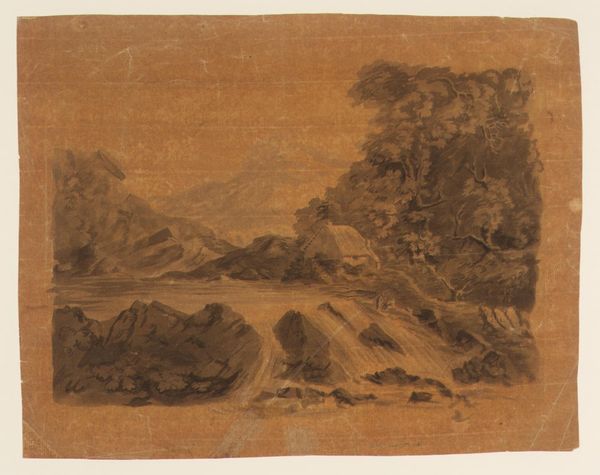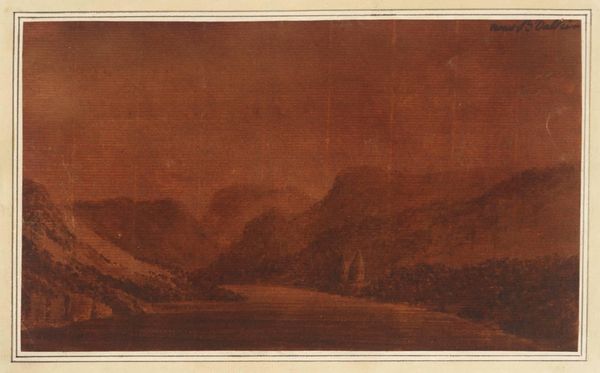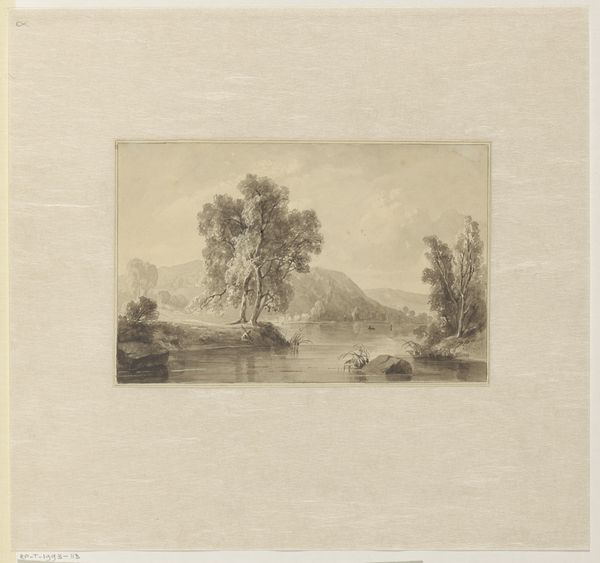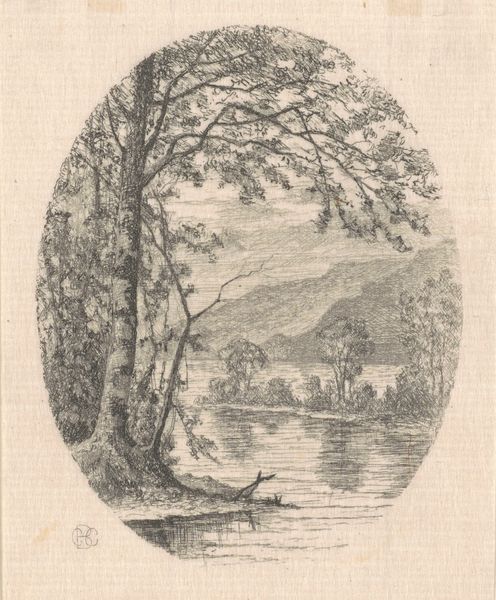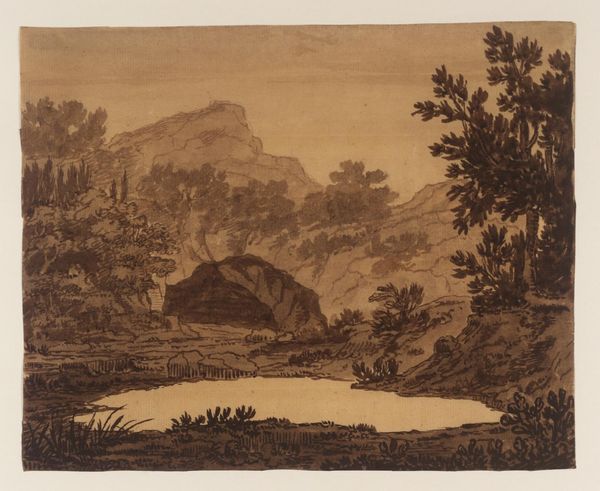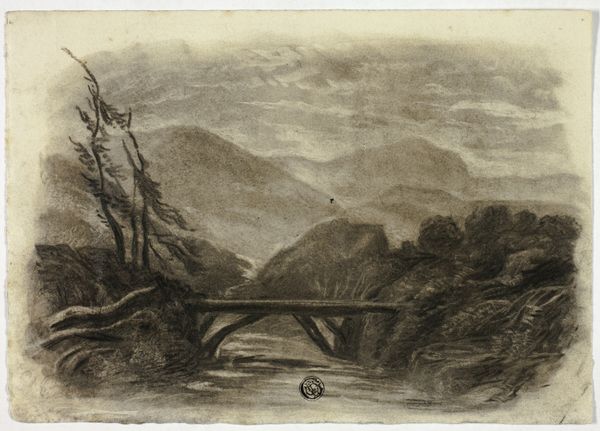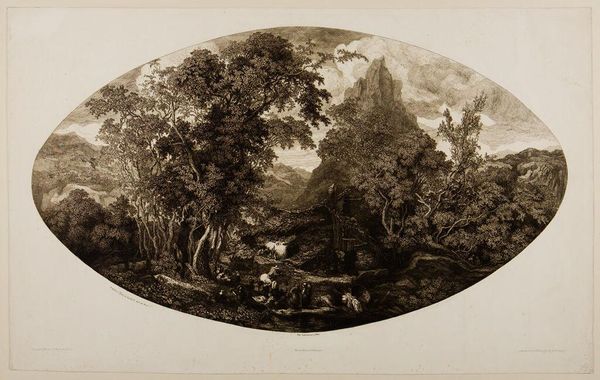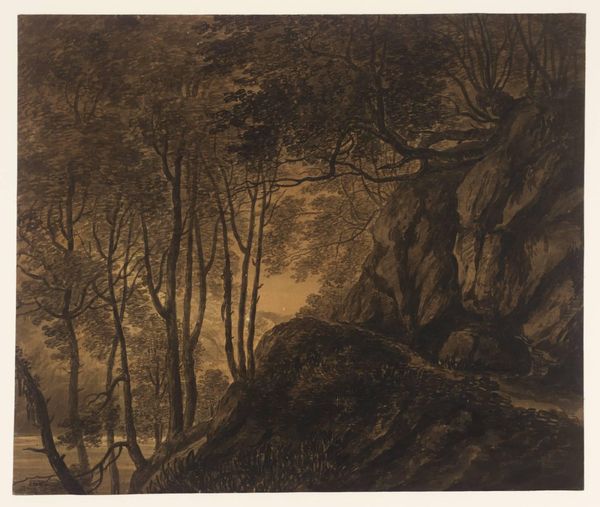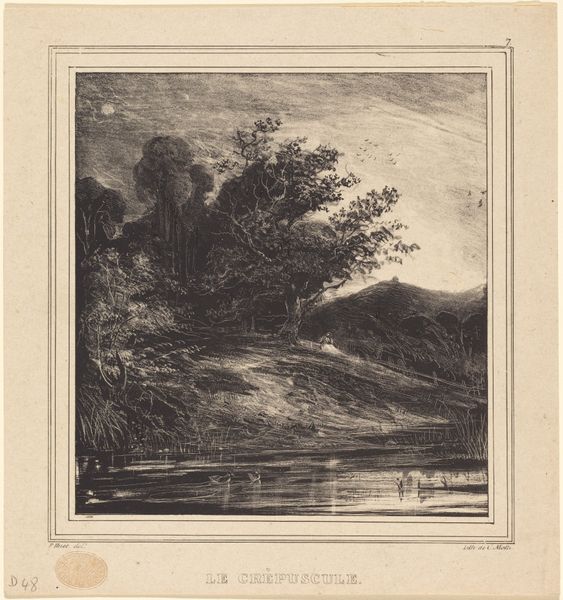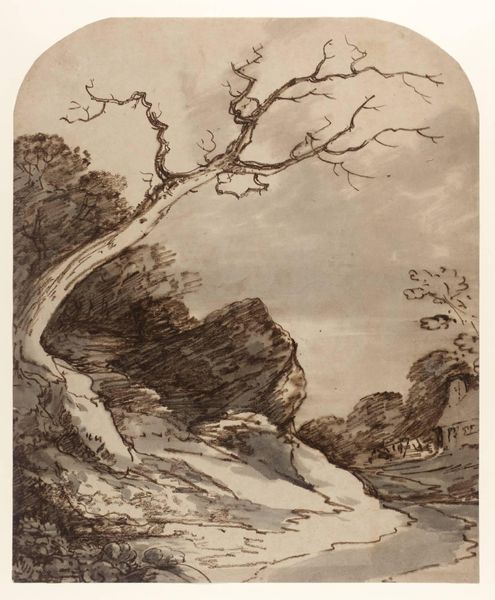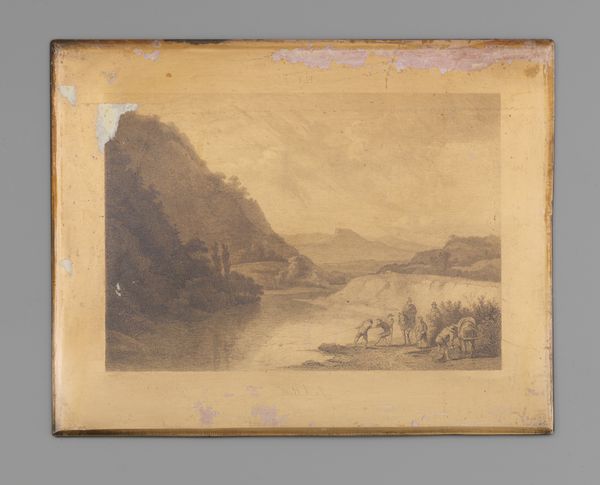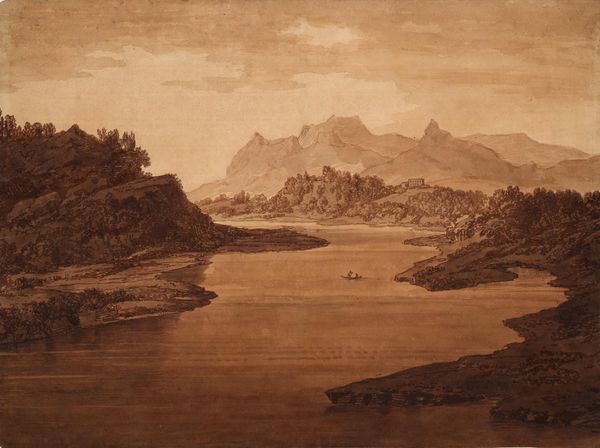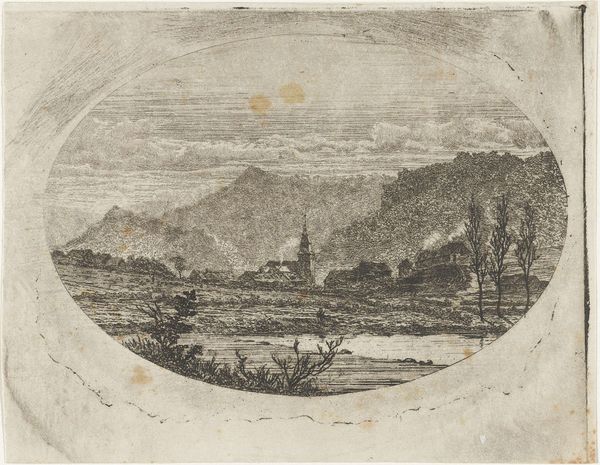
Dimensions: support: 485 x 391 mm
Copyright: CC-BY-NC-ND 4.0 DEED, Photo: Tate
Curator: Immediately, I notice how muted the overall effect is; the sepia tones create a world that feels both inviting and distant. Editor: Indeed. This is "The Pupil’s Interpretation of a Blot, Based on New Method, Plate 10" by Alexander Cozens. The piece, which resides here at the Tate, demonstrates Cozens's innovative approach to landscape drawing. His method relies on accidental ink blots as the genesis for compositions. Curator: The fact that Cozens based his landscapes on blots is so interesting! It emphasizes the role of chance and the subconscious in artistic creation. We can see him trying to subvert the traditional artistic process. Editor: Absolutely. Consider, too, that in the late 18th century, ideas about the sublime and picturesque heavily influenced landscape art. Cozens challenges the rigid aesthetic hierarchy by embracing randomness. Curator: The paper support itself is fascinating too. It allows us to see the texture and understand the labor involved in producing this artwork. Editor: It’s a powerful reminder of the socio-historical context that shaped artistic practices then. Curator: It certainly expands my perspective on the art of landscape. Editor: And it invites reflection on how we construct meaning and find beauty in the unexpected.
